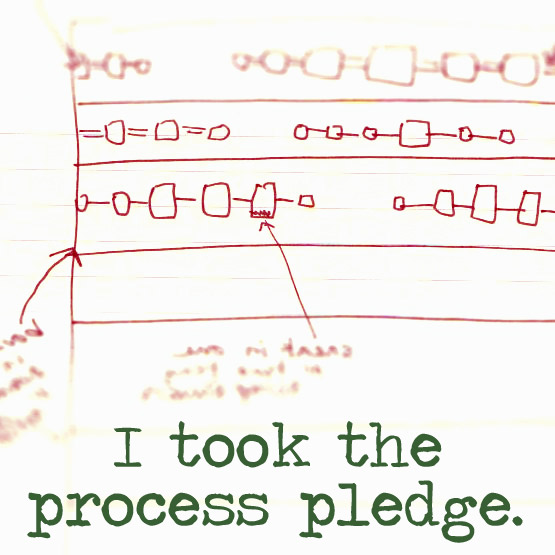I finally typed up a tutorial for you. As always, if you have any questions or suggestions, please leave a comment or send me an e-mail. Enjoy!
Word Ornament Pillows
Supplies Needed:
- Color printer (inkjet or laser)
- One package of printable fabric appropriate for your printer (I used June Tailor for inket printers)
- One 25" length of grosgrain ribbon
- Two strips of fabric 2" x 4" and two strips of same fabric 2" x 6 3/4" (I used a home dec fabric but quilting fabric would be fine)
- One 6 3/4"square of fabric (either the same as your strips or contrasting)
- One package Wright's bias piping in a coordinating color
- One small bag of poly-fil
- Hand sewing needle and thread to match your fabric
- Ruler
- Fabric pen
- Sewing machine and basic sewing supplies (pins, scissors, etc.)
- Fray Check (optional)
Here's What you do:
Start by designing your text in Microsoft Word or some other word processing program. I printed two words on each 8 1/2" x 11" piece of fabric paper. The font I used was french script - 80 point. But play around and find a font, size and color you like.
Take your printed fabric to your work surface and using your ruler and fabric pen and draw a 4" x 4" square around each word.
Remove the backing sheet carefully and cut your squares out.
Now you're going to make a basic quilt block by sewing your two small strips of fabric to the top and bottom of the text square, then sewing your longer strips to each side. Press seams open.
You should now have a 6 3/4" quilt block.
I like to apply some decorative piping to the edges using my zipper foot. I didn't take any photos of the piping process but it's very simple. Just align one end of your piping to your quilt block (right side up). Leave about an inch of the piping unsewn and then baste the piping to the block notching and pivoting at the corners. Once you've gone all the way around, simply overlap your piping edges and finish sewing, backstitching a couple of stitches at the end. You can see a few photos and more specific instructions in my Dad's Shirt Pillow Tutorial.
Now take your 6 3/4" square of fabric and place it right-side-up on your work surface. I wanted to tie these to my staircase banister, so I attached my ribbon with the folded end up and loose ends free (as shown).
Alternatively, you could create a loop if you wanted to hang these on your tree or on a doorknob. You would just want to place your loose ends at the top instead of the folded edge.
Now place your quilt block on top (right sides together) and pin all the way around, being careful not to catch the loose ends of your ribbon with your pins.
Sew all the way around (getting as close to your piping stitch as possible) but leave about 2" open (not on a corner) for turning (I usually leave my opening on the bottom toward the middle). Backstitch at both ends.
Turn right-side-out and press with a dry iron.
Now for the fun part. Using small clumps of poly-fil, stuff and plump to your heart's content.
The last step is to hand sew the opening closed (on the back) using a few small stitches.
Tie to a banister or even onto a limb of your Christmas tree. It never hurts to apply a small bit of Fray Check to the ends of your ribbon.
Hope you like!
** Linked up to the Christmas Craft Link Party at Centsational Girl




















They are so cute!
ReplyDeleteThank you!!! Means so much coming from you. :-)
ReplyDeleteVery pretty! Love the colors!
ReplyDeleteIf only I knew how to sew!!!
Lovely! I adore the fabric you chose!!
ReplyDeleteIt is really pretty - thanks for sharing.
ReplyDeleteThank you all for your sweet comments!
ReplyDelete